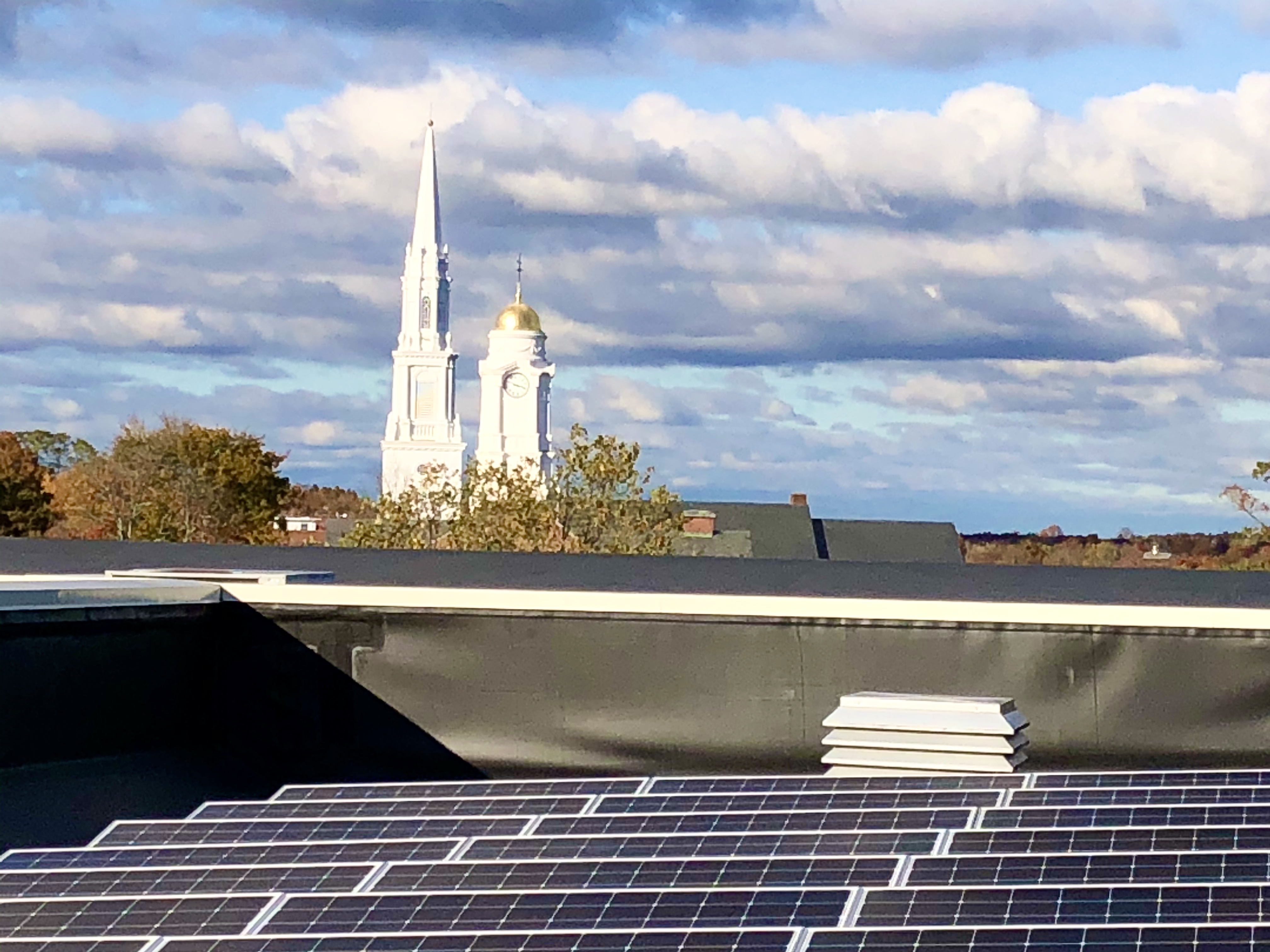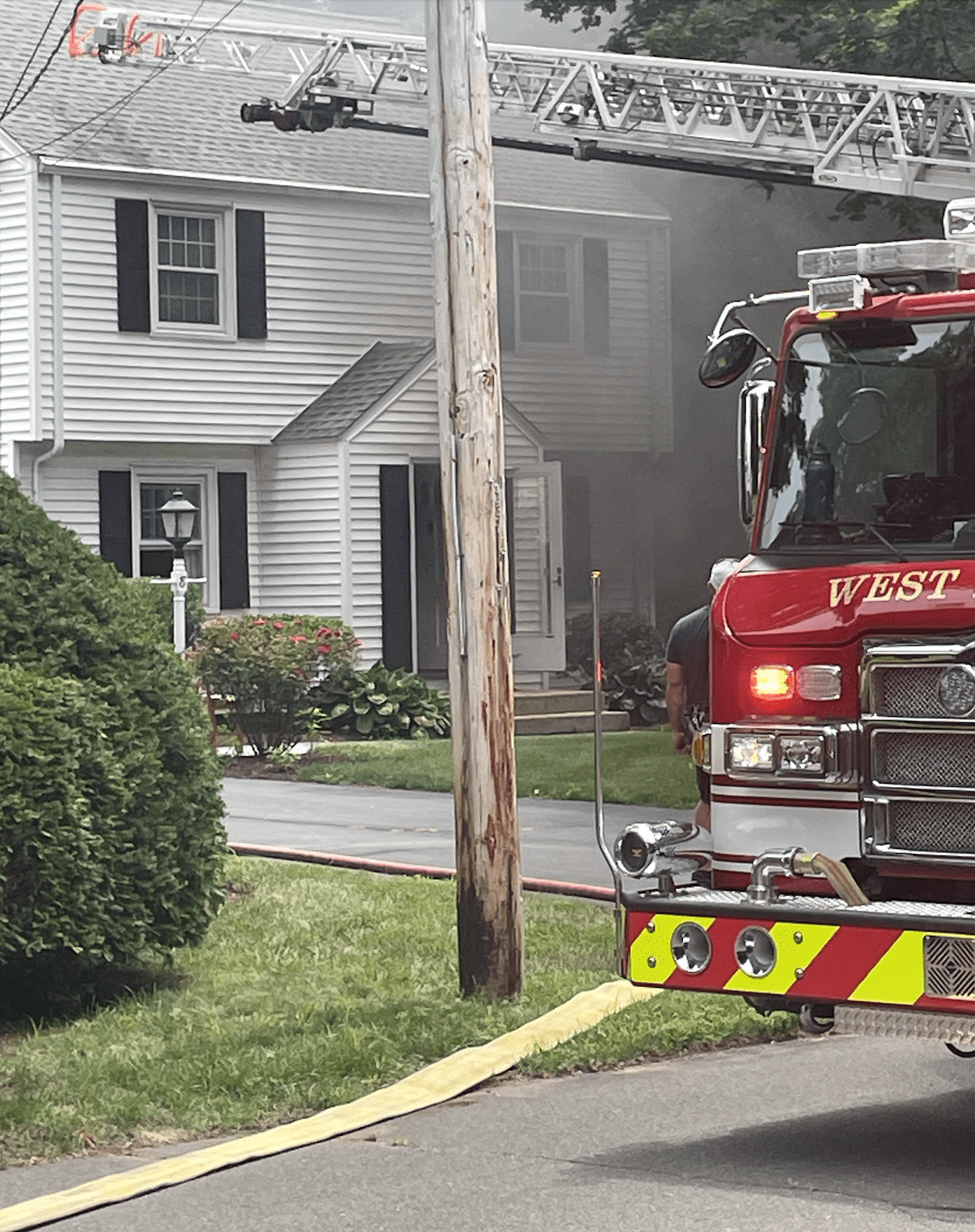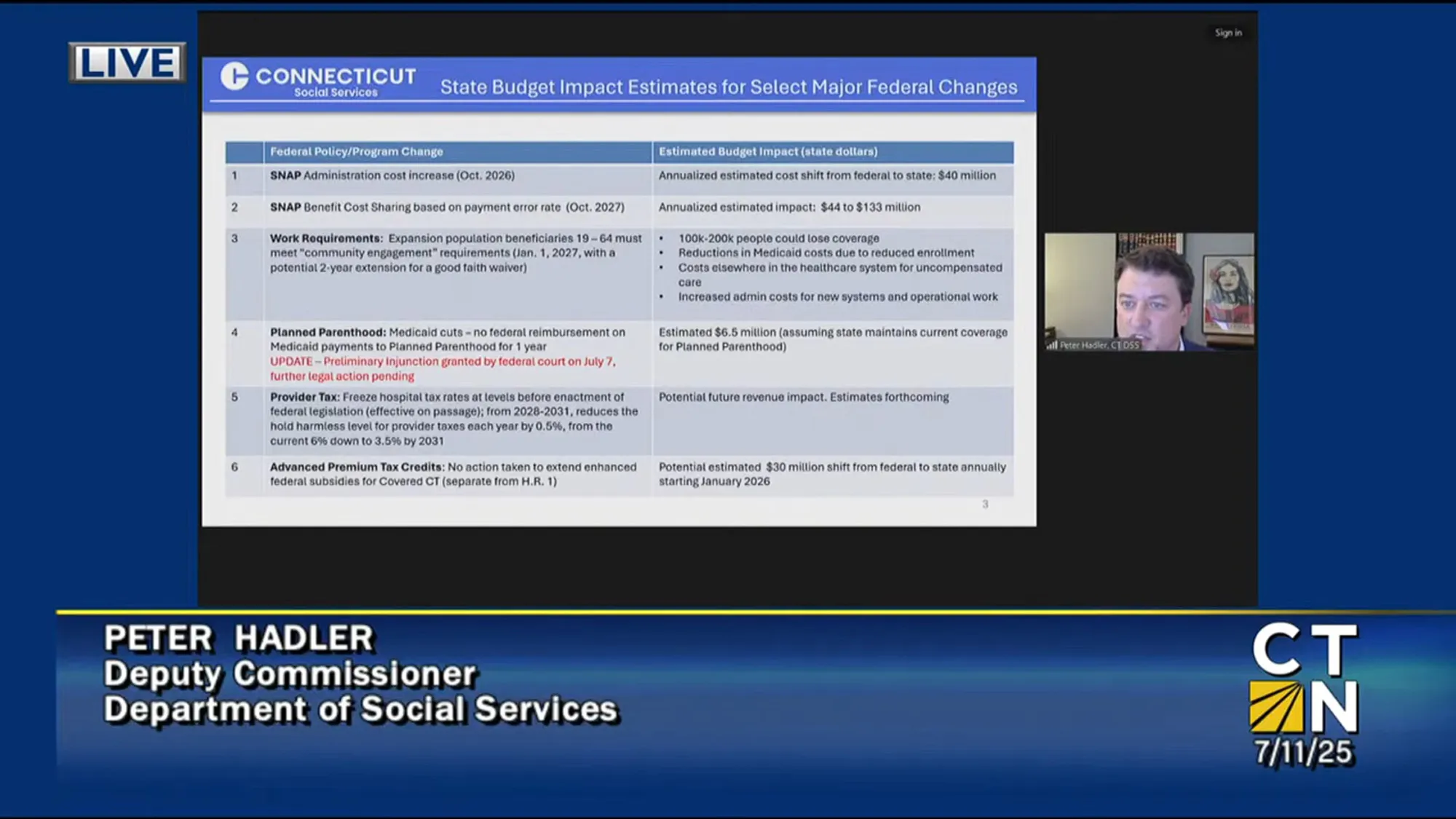West Hartford Town Council Adopts ‘Aspirational’ New Energy Plan

Audio By Carbonatix

Solar panels installed in 2019 cover the roof of West Hartford Town Hall, and will supply about 20 percent of the building's energy needs. Photo credit: Ronni Newton (we-ha.com file photo)
The West Hartford Town Council adopted a new energy plan at its June 22, 2021 meeting.
By Ronni Newton
The West Hartford Town Council adopted a new energy plan at its meeting on June 22, expanding and building on the mission and framework of the existing plan that has led to significant savings and efficiencies since it was adopted in March 2009.
“This is a really extensive document … it is aspirational, it is motivational, it is inspirational,” Mayor Shari Cantor said, expressing her support for the plan.
The plan adopted more than a decade ago has served the town well, Town Manager Matt Hart said, but the new plan not only addresses municipal energy use, but as a framework for the future it also incorporates goals and strategies for residents and businesses.
The 2021 plan, which can be found as a PDF below, is “aspirational in scope and aspires for a future where our entire community uses clean energy by 2050,” said Hart.
The plan adopted by the Town Council in 2009 led to the hiring of Energy Specialist Catherine Diviney, who has worked extensively with Plant and Facilities Director Bob Palmer on the implementation of projects that has reduced municipal energy consumption by about 20% – avoiding nearly $1 million in energy costs, according to Bernard Pelletier, chair of the town’s Clean Energy Commission.
Over the past several years, and as roofing projects are being undertaken, solar arrays have been installed on many town and school buildings, and the municipal energy supply is now 100% renewable.
Cantor was honored in December 2020 at the U.S. Conference of Mayors 14th Annual Climate Protection Awards as the town won first place for its solar virtual net metering program.
The newly-adopted energy plan focuses on the residential, commercial/industrial, transportation, and clean energy supply sectors, and includes steps to reduce energy demand and at the same time meet remaining demand with renewables. It includes short- and long-term goals, metrics for tracking progress, is aligned with the town’s Plan of Conservation and Development for 2020-2030, and reflects the town’s commitment to the U.S. Conference of Mayors Climate Protection Agreement, Hart said.
The energy plan is a guideline and does not obligate the town, Hart said, but rather is “aspirational in nature as its predecessor was.”
The town is also applying later this summer for the next level of certification through Sustainable CT – silver status – and adopting the new energy plan will be a boost to that application.
“This is a really impressive document … a very human, humanistic document,” Councilor Ben Wenograd said. He noted that moving forward with the plan must be done in an inclusive way.
Council member Carol Blanks noted the importance of sharing information about the plan with those who are “not as electronic savvy” and may not easily access information on the town’s website, but should also be encouraged to find ways to conserve energy.
Deputy Mayor Leon Davidoff said when the Council adopted the former energy plan in 2009, “I thought it was an amazing idea, that West Hartford was going to be a leader,” he said, and this has continued.
“It’s been a collaboration of years of work and the focus of what’s to come. It’s exciting and it’s challenging for us,” and he thinks the town will once again be successful in leading the way.
Cantor said it will be important to educate the community about best practices, to show what was done on a municipal level as goals focus on the residential and business sectors.
“I hope this is a living breathing document,” said Cantor, who also suggested taking another look at the plan in five years rather than 10, since technologies are evolving quickly.
During the public comment section of the meeting, several residents also voiced their support for the updated energy plan.
Christine Feeley said the new plan would provide an “important boost … moving the town from planning to implementation stages.”
Representing the Clean Energy Commission, Pelletier addressed the Town Council and noted that the town has come a long way since 2009 but is capable of so much.
Municipal operations are “a nickel in the dollar of West Hartford’s energy use,” Pelletier said, and the new plan will serve as a way to galvanize people in town. He urged an effort to include “all the people in town,” with equity as a part of the plan.
“This updated energy plan builds off the previous energy plan that saves money and reduces emission … and will set a pathway for reduced emissions for our entire community,” said Sam Dynowski, a West Hartford resident who is also state director of the Sierra Club.
Resident Hendree Milward called the new energy plan an “important step toward a sustainable future.”
The Council voted 7-0 via roll call vote to adopt the new energy plan. Chris Williams was absent and Lee Gold abstained from the vote.
Like what you see here? Click here to subscribe to We-Ha’s newsletter so you’ll always be in the know about what’s happening in West Hartford! Click the blue button below to become a supporter of We-Ha.com and our efforts to continue producing quality journalism.
 Loading...
Loading...




I was hoping to read that an “aspirational” energy policy would result in the town taking over the UConn property to use as a solar field.
Instead I am disappointed that the aspiration takes the form of “short- and long-term goals, metrics for tracking progress, is aligned with the town’s Plan of Conservation and Development for 2020-2030.”
It’s time to act decisively in addressing climate change. An opportunity to create a large solar facility in town will not present itself again.